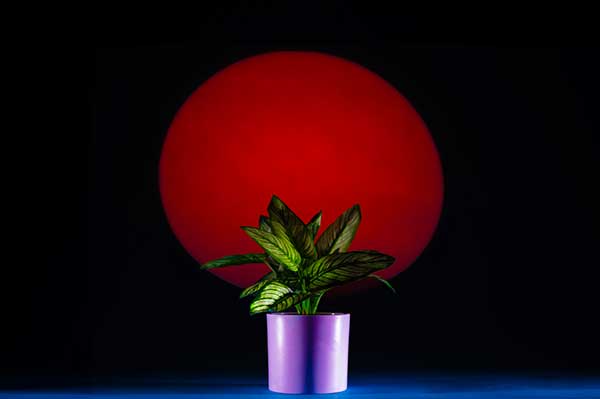Clean Energy from “Power Plant” Generators

ECE Professor Ravinder Dahiya sees potential in leaf-shaped generators that use wind and rain power to produce electricity. The research was published in the journal ACS Sustainable Chemistry & Engineering.
This article originally appeared on Northeastern Global News. It was published by Cody Mello-Klein. Main photo: By integrating small leaf-shaped generators into fake plants, or creating “power plants” that are made entirely of these generators, researchers hope to create a new clean power source using wind and rain. Photo by Alyssa Stone/Northeastern University
Fake plants could be the next source of clean energy, researchers say
Fake plants are more than just a decoration –– they could be part of the next clean energy revolution.
Researchers have created literal power plants, small leaf-shaped generators that produce electricity using wind and rain. The generators, which involve a combination of different kinds of small-scale sensors and electrodes, can be placed among the leaves of fake plants to blend in or encompass the entirety of a fake plant’s foliage. They are small but mighty.
Ravinder Dahiya, a professor of electrical and computer engineering and a member of the research team, says these 21st-century fake plants could be used as clean, self-powered energy sources in cities, beaches or even homes. They could power lights on your balcony or sensors that measure gas levels in a certain area.
“In this case, we thought you always have some wind blowing or breeze going on, particularly in areas like the beach where you don’t have an energy supply as well,” Dahiya says. “Then you can power the sensor, and if sensor powering is not needed, then you can store the extra energy in batteries and use it for later.”

Northeastern University professor of engineering Ravinder Dahiya. Photo by Matthew Modoono/Northeastern University
Although there is no shortage of natural energy sources –– the sun, wind and rain –– the researchers realized early on that they would need more than one energy source for their power plants. If it’s not raining, then a purely rain-based, or droplet-based, generator would be useless. But used with a wind-based generator, the team ensured that there would always be a source of energy.
The researchers built two different kinds of energy collectors to integrate into the power plants. The triboelectric nanogenerator (TENG) captures kinetic energy from wind, and the droplet-based energy generator (DEG) collects the energy from falling raindrops.
The TENG is made from a layer of nylon nanofibers placed between layers of Teflon and copper electrodes. When pressed together by wind or other forces, the layers generate static charges that are then converted into electricity.
The DEG, which also uses Teflon, is waterproof and covered in a layer of conductive fabric. As raindrops fall and strike electrodes on the DEG, it generates energy. The longer the droplet travels along the “leaf,” the more energy it generates.
Read full story at Northeastern Global News